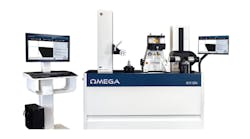“Time is money,” so the saying goes, but actually productive time is what it takes to impact bottom-line results. While manufacturers have experienced tremendous innovation and digital transformation over recent years, which have powered greater efficiencies across all facets of the manufacturing lifecycle, worker productivity and workers’ satisfaction have yet to reach the true potential.
For corporations to optimize – and ultimately strengthen – their operations, one of their highest priorities should be gaining a deeper understanding of their employees’ expectations – especially frontline workers – and then consistently informing, empowering, and engaging them in ways that allow them to execute the best possible outputs.
So what exactly is holding back businesses from pursuing this at scale? Outdated communication tactics that ostracize deskless workforces. While a Journal of Applied Psychology study found a significant relationship between employee engagement and improved productivity, customer satisfaction, and profit – the manufacturing industry is often behind on innovating and elevating employee communications programs to reach one of its largest demographics – the deskless (and thereby digitally detached) worker.
Because manufacturers often rely on word-of-mouth or board notices to distribute information to these employees, the insights they share may be inaccurate or inconsistent. In other cases, companies leverage digital-centric channels like email, which aren’t readily accessible to those operating on a plant floor who cannot access a company device during much of their working day.
This gap leaves a majority of deskless workers feeling ostracized, uninformed, and unproductive. In fact, according to data from Workday, only 34% of manufacturing employees are “engaged” while nearly as many (27%) are actively disengaged.
Lack of data to support real-time decision-making. From complex Excel spreadsheets to chalk numbers scrawled on manufacturing floors, access to real-time data and insights is fairly limited today, hindering workers’ ability to make informed, data-backed decisions at a given moment. Also, because data is continuously produced at every stage of manufacturing, it often becomes too complex and siloed due to security fears: it remains with people who don’t know how to interpret it. As a result, the information ultimately loses its value.
For deskless employees, transparency might make all the difference in day-to-day operations and long-term success, but without a concerted effort by an organization to tap into those data resources, its potential may be wasted.
Limited visualizations that inform all employees. Smart screens are all around us today but manufacturing businesses don’t always see the immediate value they may bring, citing scalability, cost, IT support, and security concerns. Even though digital signage has proven to drive productivity growth, it's mistakenly viewed as a technical nightmare to implement and maintain.
Even in situations where technology is supporting productivity growth, it’s generally oriented toward the head office environment; many organizations currently don’t deploy ways for deskless employees to visualize crucial information in ways that will reach them where they are.
A better way forward
Manufactures can overcome this gap between the front office and the plant floor by implementing Business Intelligence software tools like Microsoft Power BI and Tableau, to achieve visibility across all operations – from production all the way through to sales. A 360-degree view of the business can be had at the click of several buttons, rather than manual analysis that might take weeks.
By pairing BI with visualization dashboards and digital signage, business critical information can be projected onto screens, enabling real-time, visual representations of operational performance and data across the demand chain. And, the entire organization will have access to this information, not just those working at a desk.
Digital signage also can convey information about compliance, new products, upskilling, or best practices that can enhance employees’ day-to-day productivity. By having access to data-backed insights, employees can recognize tangible actions they can take to improve productivity, including:
• Responding to alerts: Employees can more easily identify problems in production before they cause delays. The manufacturer can set job-specific parameters and get alerted as soon as outliers are detected.
• Predicting bottlenecks: By monitoring, analyzing, and communicating better at every stage of the production process, workers can do a better job of predicting where bottlenecks may occur – and correct as needed. Having historical data also may help them to forecast potential delays.
• Inserting late/emergency orders: Manufacturing personnel can identify where there is “bandwidth” in the organization’s sales and production cycles, to determine whether last-minute orders are feasible.
• Empowering and motivating: Sharing relevant data and insights to make informed, data-driven decisions provides the power of visibility and encourages employees to feel engaged and motivated. For instance, having a dashboard of metrics that presents how an organization is performing against safety and compliance protocols can make them feel safe or discover ways to improve.
Businesses also can use data to “gamify” the workplace, creating performance incentives through rewards or recognition that encourage employees (e.g., the person who achieved the best throughput or most production cycles in a given month.)
The manufacturing industry can no longer rely on outdated communication tactics to inform their employees. Those that do will face employee turnover, challenges with talent acquisition, and may jeopardize their reputations and hurt bottom line, too. Using strategic technology like Business Intelligence tools and digital signage can significantly improve performance, and data shows that deskless employees with sufficient technology are more likely to be very satisfied with their job (44%) and plan to stay with their current employers the next five years (35%.)
Effective messaging can not only bring together connected and deskless employees, it can highlight the most important metrics and business intelligence to set organizations up for success. By visualizing the right data for the right audience, manufacturers can ensure a greater advantage over competitors as the manufacturing industry develops.
Jonny Kirk is the Product Strategy Director for ScreenCloud, a developer of digital signage software for displaying information and graphics on any screen or TV.






